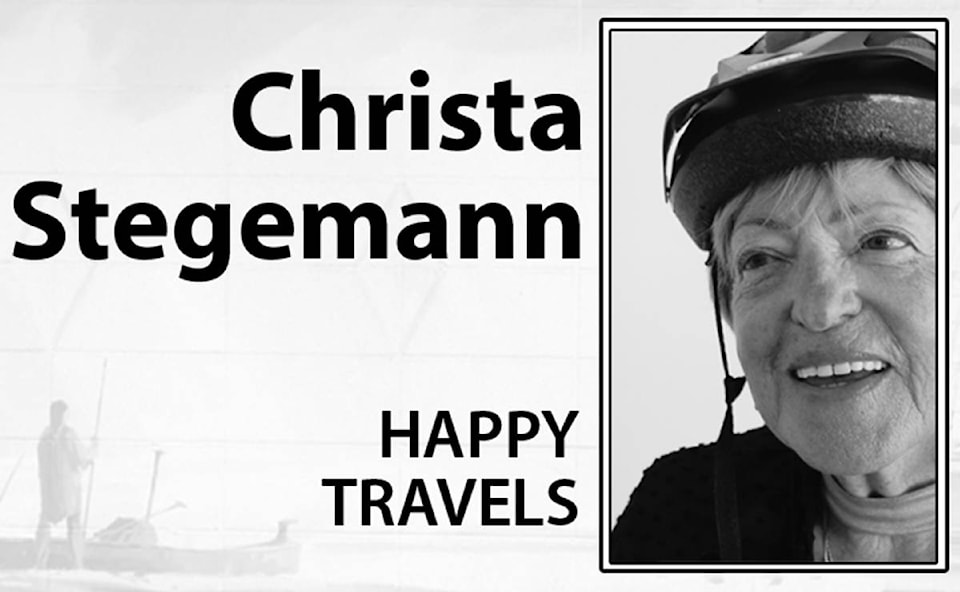In the morning, after having slept soundly in our rented room in St. Catherine’s Monastery, on the Sinai Peninsula in Egypt, we proceeded to the dining room to have our breakfast.
We chatted amicably with three women, who were traveling together. We discovered all three of them were nurses who worked at the Edmonton, AB General Hospital. They had come from Cairo and were hoping to find someone with whom to visit Petra, the rose-coloured city in Jordan.
Having heard that three women without male companionship may not be safe in that strictly Muslim country, they were thrilled we were headed in that direction. We decided to travel together.
All three of them were amazed when we told them we had a room with a private bathroom. They had been at the monastery for a whole week, having to use a hole in the floor. There were two straps hanging from the ceiling which were used to balance themselves, trying to hit the hole. We all had a good laugh and handed them our room key. They were overjoyed and took turns using our luxurious amenities. The following day we boarded the bus that took us to Nuweiba. This tiny town on the western shore of the Bay of Aqaba became a treasure trove of information for us. There, we were shown a large area where desert sands met the gently lapping ocean waves.
Swedish scientists had come to the conclusion this is the only place on the Sinai Peninsula where Moses could have led the children of Israel, who consisted of approximately two million men, women and children. They would have gathered here on the shore when the Egyptian Pharaoh’s army almost caught up to them. These scientists learned that although the Bay of Aqaba is very deep with huge undersea mountains and valleys (some over a mile deep) just a short distance from shore, there is a several hundred feet wide, flat shelf, approximately 50 feet below the water level, leading all the way from Egypt into Saudi Arabia. The distance between the two countries is about 18 kilometres.
The Swedes sent divers to inspect and photograph this shelf. What they found is astounding. The ocean floor consists only of hard-packed sand. Coming close to halfway across they found and photographed numerous coral encrusted human and horse bones. The most astonishing finds are coral encrusted chariot wheels and axles.
Another find is several gold-covered chariot wheels. These are so fragile because the wood has long ago disintegrated and they cannot be moved without destroying them. Coral does not stick to gold. The photographs are clear and easily identified.
I am once again amazed at the evidence showing that science, when conducted with integrity, does not contradict Biblical records. See Exodus 14:21-31.
I have read that divers have looked at a variety of bodies of water over the years, trying to find proof for a massive Exodus and subsequent drowning of Pharaoh’s army, but had not found anything to substantiate the Biblical story until scientists from the Stockholm University investigated earlier reports and substantiated those findings.
Once again, facts and faith need not conflict.
Nuweiba had certainly turned out to be a much more interesting place than we had anticipated.
Together with a large number of travelers, we boarded a ferry and were now on our way to the port of Aqaba in Jordan.
We spent the next two weeks traveling throughout that very interesting country. My husband took great pleasure, wherever we went, to introduce his “four wives.” Those who believed him were duly impressed because only a very wealthy man could afford to have four wives. If only they knew.
One of the women had just lost her beloved husband and was grieving. Her two friends had taken her on this trip of a lifetime to help her through this very difficult time.
We spent time in Wadi Rum, the place where Lawrence of Arabia had lived. This is also the place where the film of the same name had been produced. The landscape was phenomenal. Colourful mountains surrounded this barren wasteland. We climbed one particularly large hill of bright pink sand. It was hard to make headway while sinking almost up to our knees in this ever-moving surface. When finally reaching the top, we decided to act like children and rolled our adult bodies all the way to the bottom of that hill, laughing and screaming like banshees.
We took a tour with several other travelers in three 4 x 4s and were shown into a cave where there were ancient drawings hewn into the rock walls. In several places we came across herds of sheep and goats that were led by Bedouin shepherds. Sometimes there were camels tethered behind Bedouin tents. Then came the day we walked several miles into the ancient city of Petra. Massive building fronts were hewn into the rose-coloured rock. They are a mixture of Roman/Grecian architecture.
After spending a whole day walking, we were tired and decided to ride camels for part of the way back. The last five miles of our return journey, we rode donkeys.
Exhausted, we returned to our hotel built into the side of a hill and were told that dinner would be served on outdoor tables in the courtyard. The sun had sunk behind the mountains and darkness covered the land. We sat around large tables, drinking in the beauty of the twinkling lights of the city below us.
Dinner was served by candlelight and strings of coloured lights all around the tables. Although we were in a strictly Muslim country, we were able to buy and enjoy several glasses of fine wine, while we listened to Middle Eastern music.
“Memories are made of this…”
(Christa Stegemann is a Saltair resident and frequent traveller/adventurer).
